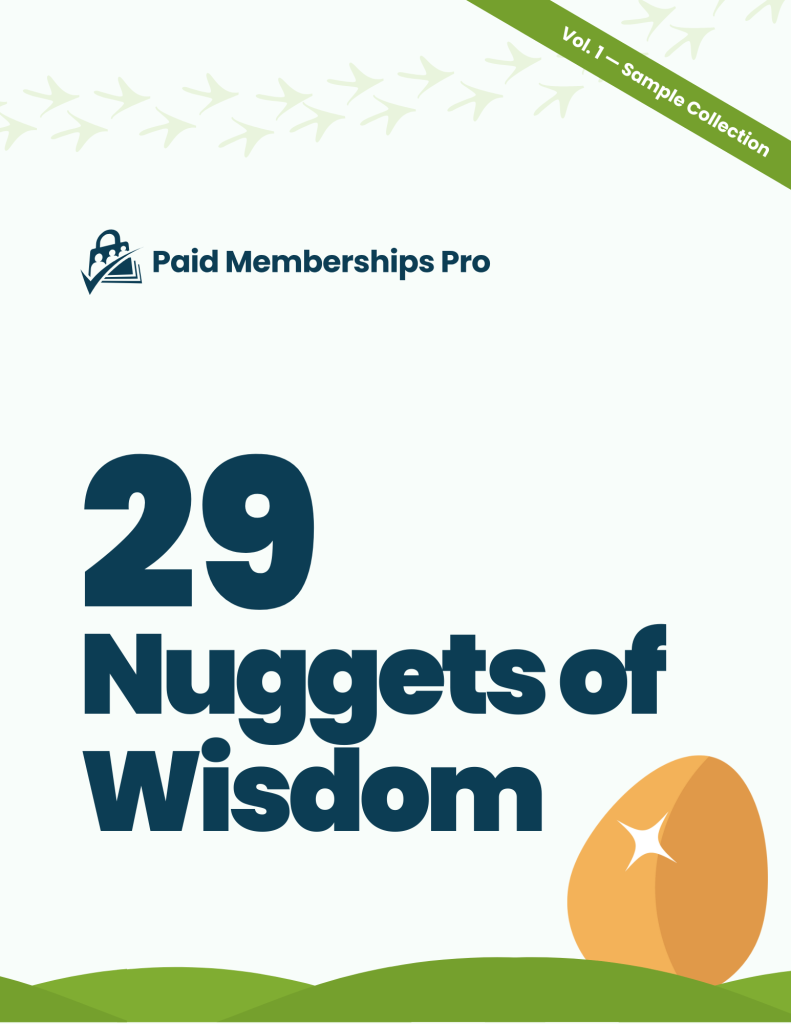Naming your membership levels might seem like a small detail, but it can have a significant impact on your business.
The names you choose for your membership tiers aren’t just labels. They shape how potential members perceive your offerings, influence their decision to join or walk away, and set the tone for your brand’s identity.
Whether you’re launching a new membership site or refining your current pricing structure, naming your levels is a high-impact decision that affects conversions, engagement, and long-term retention.
In this article, you’ll learn why your membership level names matter more than most people realize. We’ll cover proven naming structures, explore the psychology behind what makes names effective, share real-world examples, and offer a step-by-step framework to help you craft better names.
Let’s dive in.
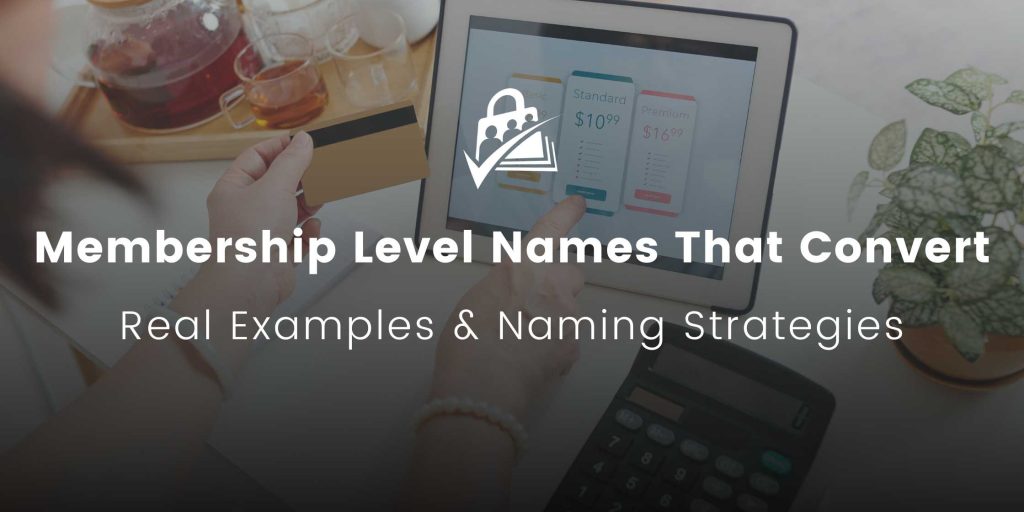
Why Choosing the Right Membership Level Names Is So Important
The names you assign to your membership levels do more than list features.
They influence how people perceive your offer, shape first impressions, and guide users toward the right choice. Choosing the right package names or tier names gives your pricing page structure and purpose, helping visitors compare options and decide with confidence.
Good naming also improves conversions. When your level names are clear, aligned with your brand voice, and consistent with the value each tier provides, they build trust and professionalism. People are more likely to act when they understand what they are choosing.
Over time, strong names support member retention. Labels like Pro Member or Insiders Club create a sense of identity, belonging, or achievement. This emotional connection can encourage members to stay engaged and renew.
Your membership level names are a powerful marketing tool that supports the success of your membership site.
The Psychology Behind Effective Membership Level Names
Great membership level names don’t just inform; they tap into emotion, identity, and motivation. The best names make people feel something before they even read the details.
Here are four psychological triggers that can make your level names more compelling:
1. Aspirational appeal: Names like Visionary, Champion, or Elite speak to who someone wants to become. They create a sense of upward movement and personal growth, which encourages upgrades and long-term commitment.
2. Human connection: People love feeling like they belong. Names such as Founders Circle, Insiders Club, or Core Members tap into that desire for community and exclusivity. These kinds of names create a shared identity among members.
3. Status signaling: Many members are motivated by prestige or recognition. Naming a tier Gold, Platinum, or Executive subtly reinforces a higher perceived value and can trigger a desire for status or exclusivity. These names suggest accomplishment and reward achievement.
4. Gamification and progression: Tier names that suggest advancement, such as Beginner → Pro → Master, give members a clear path to follow. This taps into the human desire for progress and achievement, encouraging ongoing engagement and upgrades.
5. Emotional appeal: The right words can evoke strong emotional reactions. For example, Pro sounds practical and competent, but Trailblazer feels bold and empowering. Similarly, Champion suggests success, recognition, and confidence.
By choosing emotionally resonant names, you create a deeper connection with your members. It becomes about more than just access or pricing. It becomes about who they are and who they want to be.

As someone who has worked with thousands of membership sites over the past 14 years, I’ve seen how impactful the right membership level names can be. Don’t hesitate to experiment or make changes as your site evolves—a flexible approach can make all the difference in how your members connect with your offerings today and in the years ahead.
—Kim Coleman, Co-founder of Paid Memberships Pro
Proven Membership Level Structures + Real Brand Examples
There’s no single right way to name your membership levels, but some naming structures consistently outperform others in terms of clarity, conversion, and brand fit.
In this section, we’ll explore the most common and effective ways to name membership levels, including tier names, package names, and creative structures used by real brands.
1. Value-Based Hierarchy
This classic structure presents membership levels in a clear order of increasing value and prestige. Each tier unlocks more features, benefits, or access, making the upgrade path intuitive and aspirational.
This approach taps into human psychology around status, achievement, and progression. People naturally understand hierarchies and feel motivated to level up over time.
Best for: SaaS platforms, online courses, fitness memberships, software tools, content libraries, and any service where additional features translate to greater value.
Common names:
- Basic → Standard → Premium → Elite
- Bronze → Silver → Gold → Platinum
- Beginner → Pro → Master → Expert
Example: American Express uses Green → Gold → Platinum → Centurion to signal increasing prestige and exclusive benefits. Each tier name immediately communicates relative value, and the progression feels natural and aspirational.
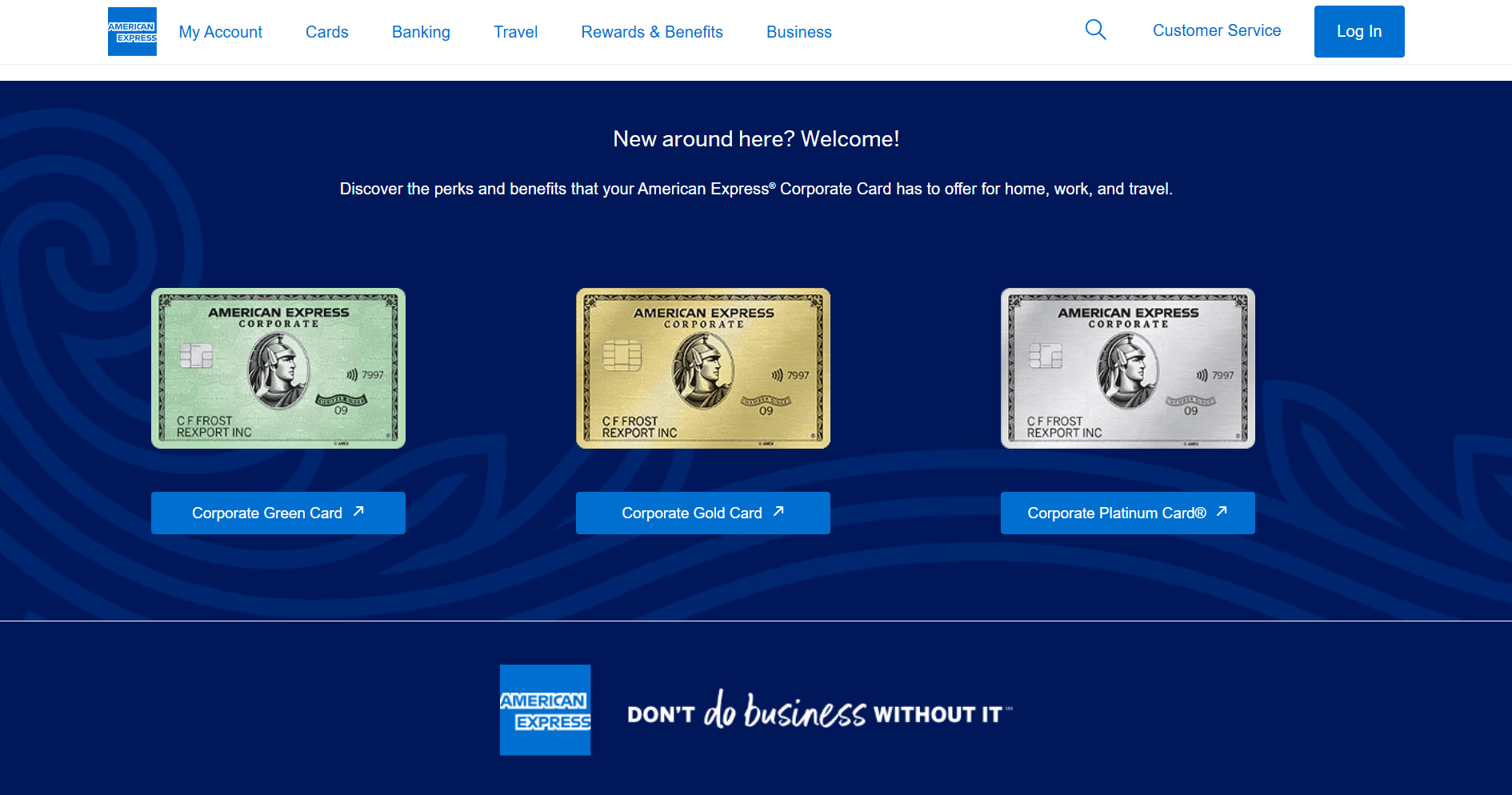
2. Audience-Specific Naming
This approach names membership levels based on who they serve rather than what they include.
Instead of forcing users to decode feature differences, these names help people immediately identify which plan fits their situation. This reduces decision fatigue and speeds up the signup process because visitors can self-select based on their role, organization size, or relationship status.
The psychology behind this structure is simple: people want to feel understood and served appropriately. When someone sees Student, Family, or Enterprise, they instantly know whether that tier was designed for them, creating confidence in their choice.
Best for: Streaming services, productivity platforms, education tools, team-based software, and any service where user type significantly impacts needs or pricing.
Common names:
- Student → Individual → Family → Enterprise
- Solo → Team → Agency → Corporation
- Personal → Business → Professional
Example: Spotify offers Individual, Duo, Family, and Student plans that speak directly to different user types, helping subscribers choose quickly and confidently while supporting custom pricing for specific groups.
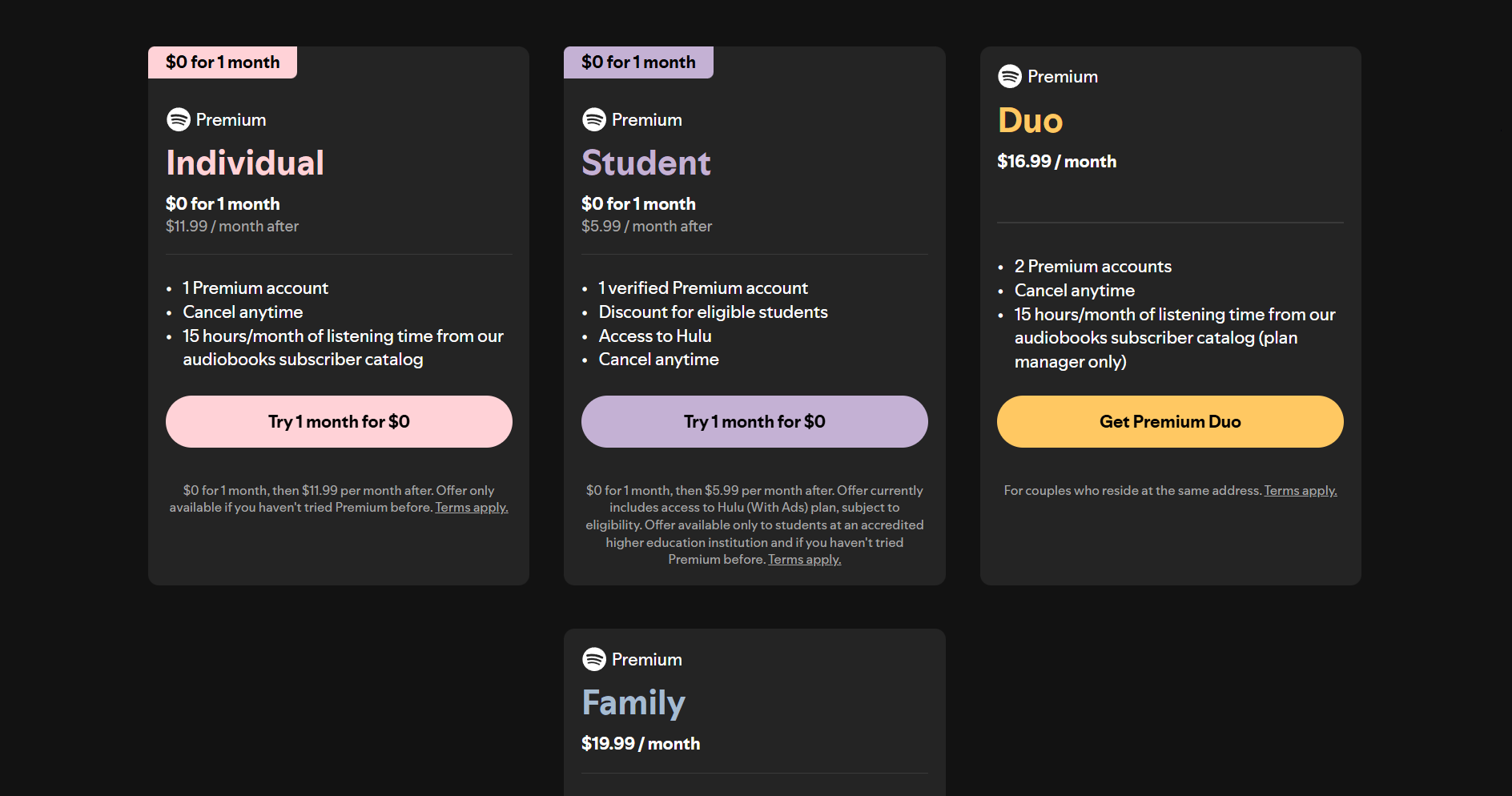
3. Access-Based Structure
This naming model reflects how much content members can access or how it’s delivered to them. Rather than focusing on status or features, these names clearly communicate the scope or format of what members receive.
The approach works particularly well when your primary differentiator is volume of content, delivery method, or subscription duration. Members can quickly understand what they’re getting and make informed decisions based on their preferences and needs.
This structure removes ambiguity about value while making upgrade paths logical and obvious.
Best for: Publications, media companies, subscription boxes, online learning platforms, content libraries, and hybrid education platforms where delivery format matters.
Common names:
- Digital Only → Print Only → Print + Digital
- Monthly → Yearly → Lifetime
- Starter → Full Access → Unlimited
Example: The Wall Street Journal uses Digital Only and Print + Digital to help subscribers choose their preferred format while reinforcing the value of bundled options for increased convenience.

4. Community-Focused Names
This structure emphasizes belonging, support, and personal identity over features or pricing. These names create emotional connections by making members feel like insiders or valued contributors to a mission.
Rather than transactional relationships, community-focused names foster deeper engagement through shared identity and purpose. Members aren’t just paying for access – they’re joining a movement, supporting a creator, or becoming part of something meaningful.
This approach works especially well for building loyalty and reducing churn because people stay connected to communities they feel part of, not just services they use.
Best for: Creator platforms, nonprofits, patron-supported content, crowdfunding initiatives, niche communities, and mission-driven organizations where belonging matters more than features.
Common names:
- Fan → Superfan → Inner Circle → VIP
- Supporter → Advocate → Champion → Visionary
- Member → Insider → Founder → Ambassador
Example: Patreon creators like Smarter Every Day use quirky, mission-specific names such as Cat Flipper and Gentleman/Lady Scholar that reflect the community’s unique culture and make contributors feel like valued insiders.
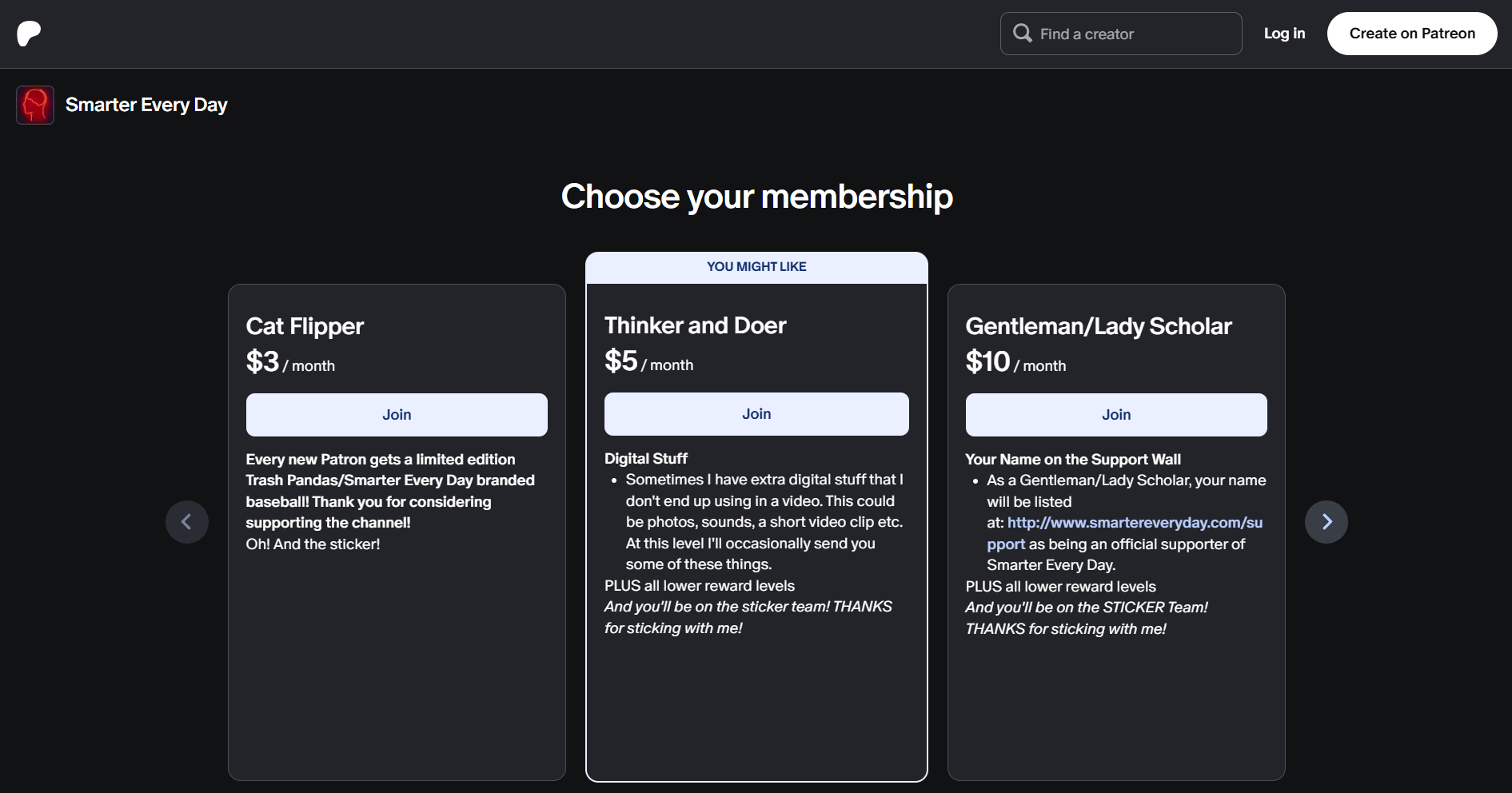
5. Outcome-Focused Naming
This structure highlights the results or transformation members achieve rather than the features they receive. These names work particularly well for educational platforms, coaching programs, and skill-building memberships where the end goal matters more than the process. By focusing on outcomes, you tap into members’ aspirations and desire for personal growth.
This approach creates emotional investment in the membership journey and positions upgrades as investments in personal development.
Best for: Online courses, coaching programs, professional development sites, skill-building platforms, and any membership focused on transformation or achievement.
Common names:
- Explorer → Achiever → Master → Mentor
- Foundation → Growth → Peak Performance
- Startup → Scale → Industry Leader
Example: Treehouse uses progression-focused names, such as Courses, Courses Plus, and Techdegree, that signal an increasing commitment to career advancement, making members feel they’re on a meaningful learning journey toward professional success.

Quick Selection Guide
- Choose a value-based hierarchy if you have clear feature tiers and want simple, universal appeal.
- Go for audience-specific if you serve distinct user groups with different needs.
- Select access-based if your main differentiator is what/how much people get.
- Choose community-focused if belonging and identity matter more than features.
- Go for outcome-focused if you’re selling transformation or skill development.
You can use one primary structure or try to blend different structures.
For example, Pro Monthly combines a value-based hierarchy (Pro) with an access-based structure (Monthly), while Founder’s Circle blends a community-focused naming approach (Circle) with a value-based hierarchy, suggesting premium status (Founder).
Now that you’ve seen what works, it’s time to create your membership level names.
How to Create Names for Your Membership Levels
Whether you’re starting from scratch or refreshing your current tiers, the process doesn’t have to be overwhelming. So here’s a step-by-step guide to help you name with clarity and confidence.
Step 1: Choose a Structure and Define Each Tier’s Value
Start by deciding how your levels will be organized by access, pricing, audience type, or delivery method.
Basic → Standard → Premium or Free → Pro → Elite are some of the most popular 3 tier package names used across industries.
Once you’ve chosen a structure, list what makes each tier unique in terms of pricing, features, or content access. This ensures each name has a clear purpose.
Step 2: Align With Your Brand Voice and Theme
Your level names should reflect your brand’s tone.
Go with straightforward labels if your voice is professional (Starter, Pro, Enterprise) or use a creative theme if your brand is playful (Explorer, Pathfinder, Trailblazer).
Pick a naming theme that adds personality but still communicates value.
Step 3: Brainstorm or Generate Name Ideas
If you’re stuck, use Paid Membership Pro’s AI Name Generator to explore catchy, creative level names that reflect your tone and tier structure.
It’s a helpful way to come up with names for everything from simple tiered plans to more specialized options like course packages, premium access levels, or sponsorship level name ideas.
AI Tool to Generate Membership Level Name Ideas
Use the Level Names AI Generator below to come with ideas for your membership level names using the GPT AI.
Step 4: Create Membership Levels on Your Website
If you’re using WordPress, the easiest way to set up custom membership levels is with the free Paid Memberships Pro (PMPro) plugin. After installing and activating the plugin, a setup wizard guides you through key configurations.
To create and manage levels, go to Memberships > Settings in your WordPress dashboard.
Here’s a quick overview of what you’ll do to create a new membership level:
- Create Membership Levels: Click Create A Membership Level, select a level template and assign a name, description, price, and access rules.
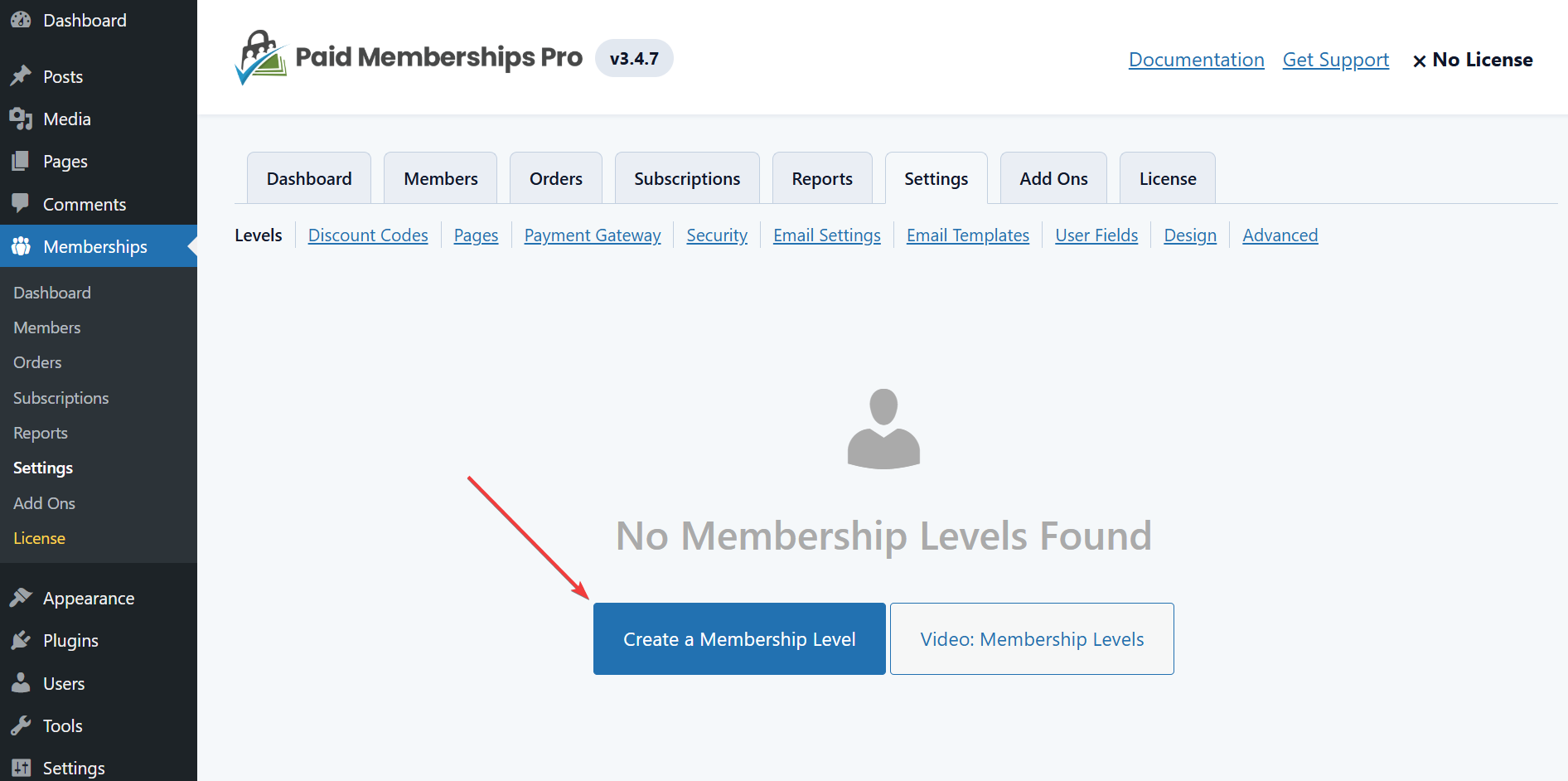
- Set Billing & Expiration: Define recurring payments, trial periods, and renewal options.
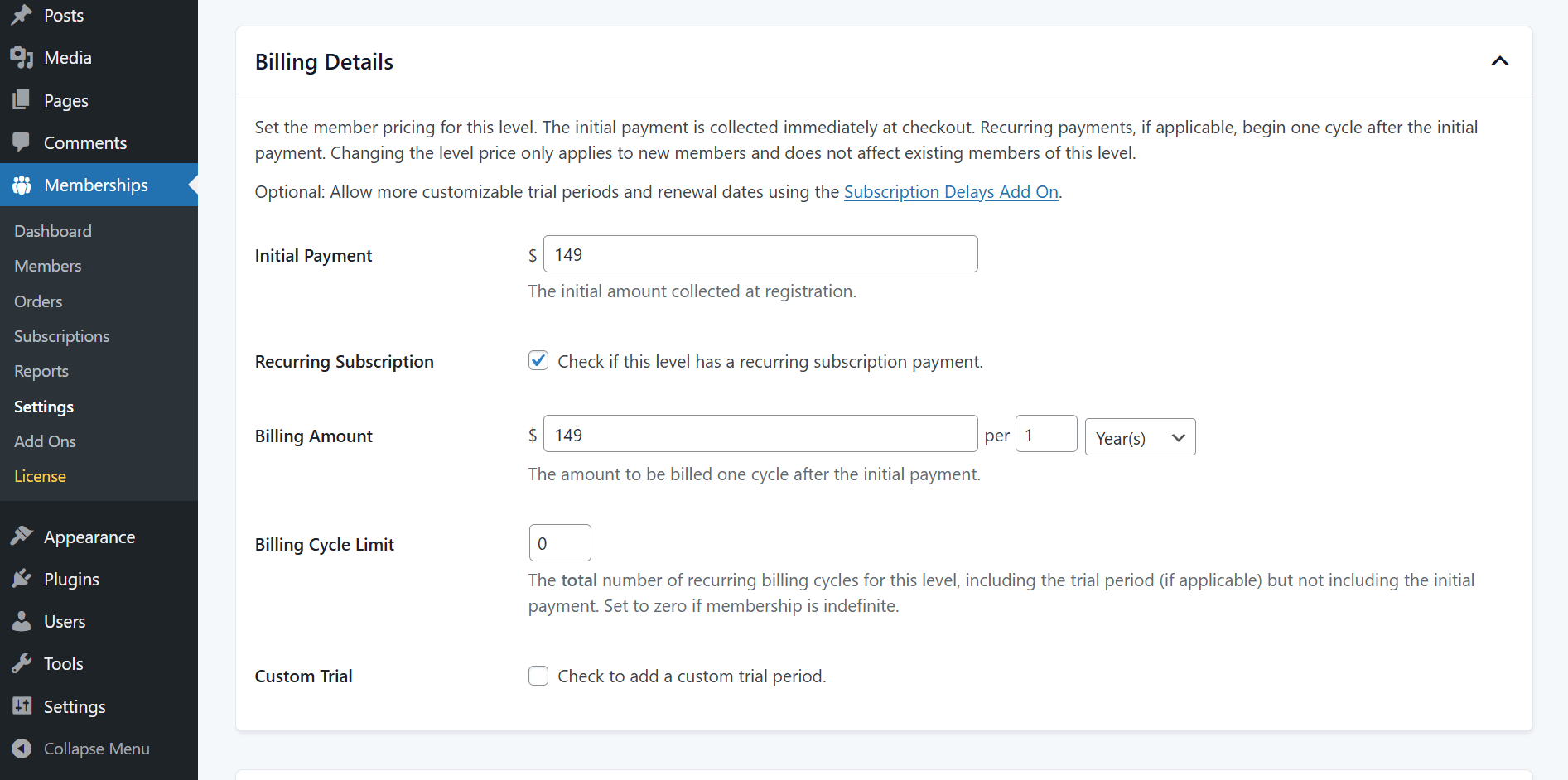
- Control Content Access: Choose what pages, posts, or categories each level can access.
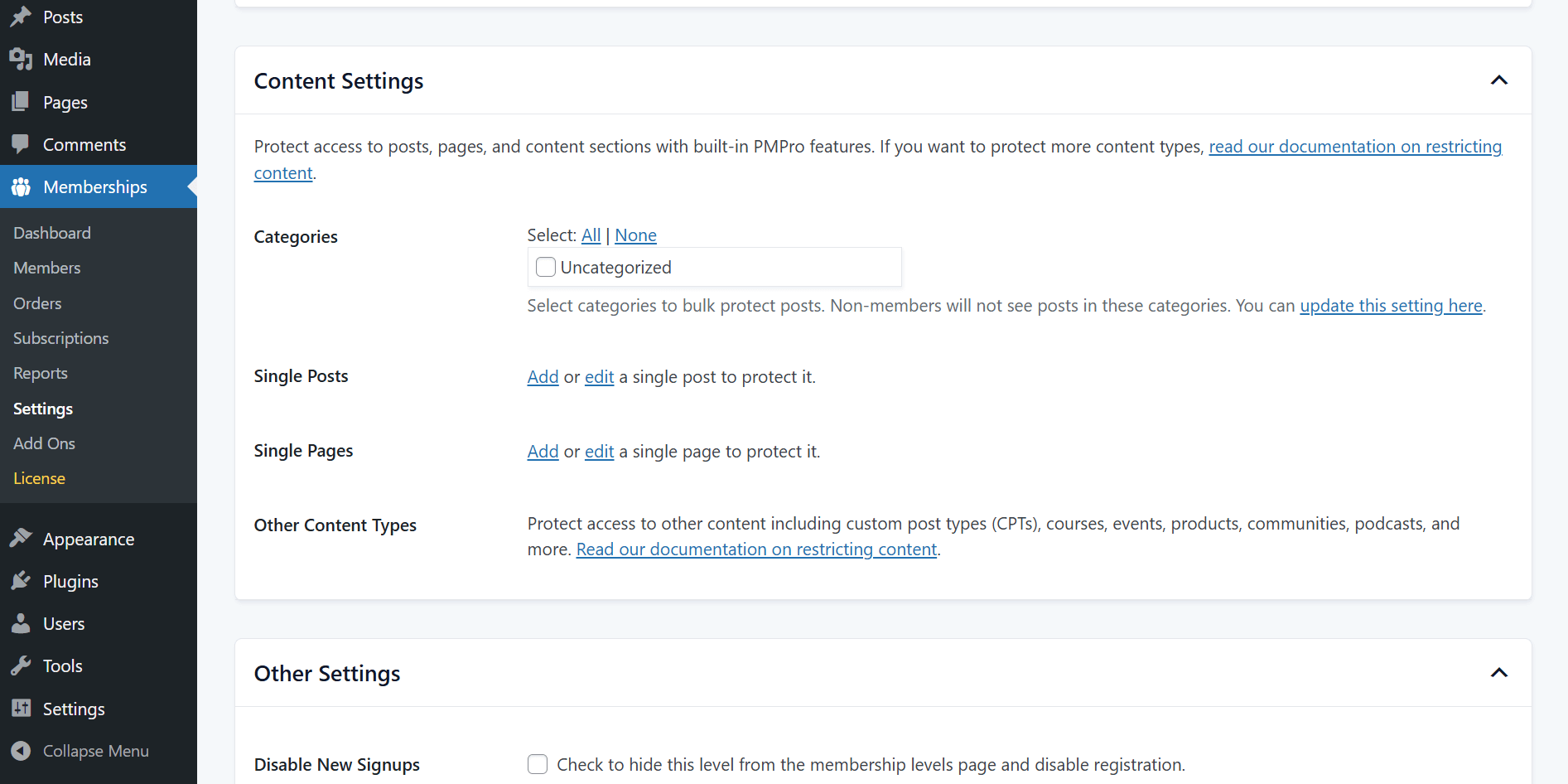
- Optional: Group Levels for better organization and user flow.
For detailed explanations of each configuration option, please refer to our comprehensive help doc on setting up the membership level.
Important Note on Editing Membership Levels
When editing an existing membership level in Paid Memberships Pro, be aware that changing the level name will update the name for all members currently assigned to that level ID. This can potentially create confusion for your existing members, as their membership will now display under the new name without any change to their account or billing.
Recommendation: To avoid member confusion, instead of renaming the existing level, create a new membership level with the desired name. Then, update your site or plan to gradually transition members as needed, or leave existing members on the legacy level while offering the new option to new signups.
Need more control over your membership levels? PMPro allows you to upgrade or downgrade membership levels, add or update members, remove members, and delete a membership level, among other things.
If you’re not using WordPress, most platforms like Podia, Thinkific, and Kajabi offer similar tools to manage and customize membership levels. You can find detailed setup guides in their documentation to help you configure pricing, access, and tier visibility.
Step 5: Test, Validate, and Refine Your Membership Level Names
Once you’ve created your membership levels, take time to test how they perform. Strong names should be clear, emotionally engaging, and aligned with your audience’s expectations. Here are a few simple ways to validate and improve them:
- Use surveys, polls, or Slack groups to ask how clear and appealing your level names are.
- Try different names on your pricing or sales pages to see which versions drive more clicks or signups.
- Track hover behavior, scroll depth, and clicks to understand which names hold attention or cause drop-offs.
Don’t be afraid to refine membership level names as your audience grows or your brand shifts direction.
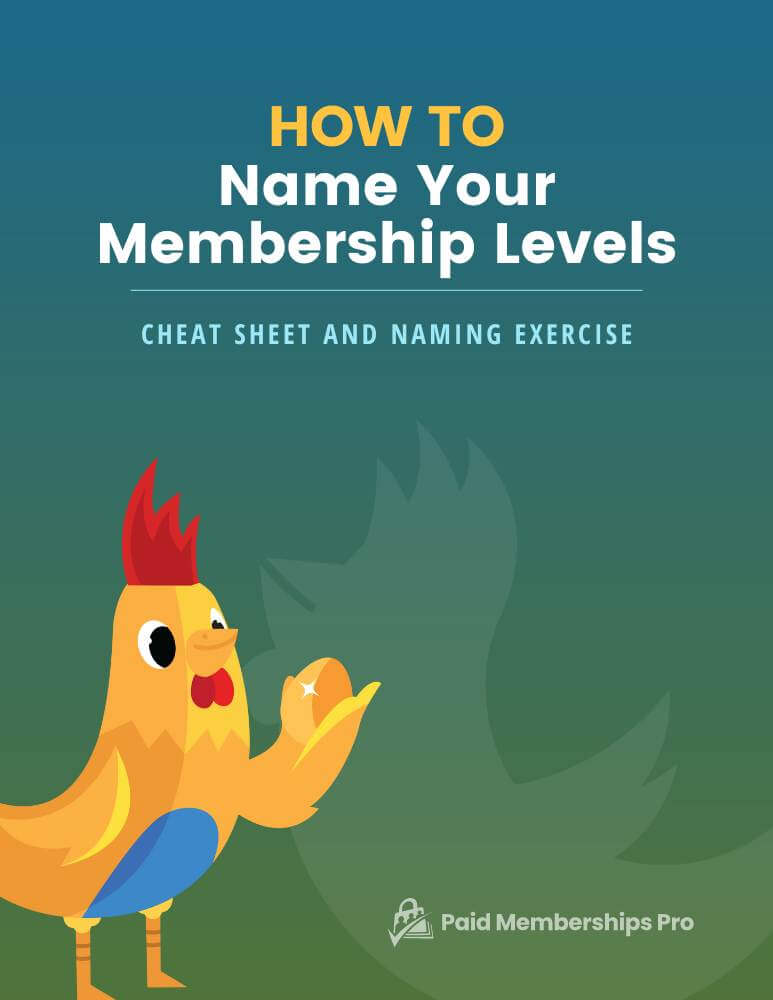
DOWNLOAD NOW
Grab the free cheat sheet and exercise book for how to name your membership levels. This guide and the companion naming exercises will help you understand the most common level naming structures and brainstorm your own site’s level names.
FAQs
Common 3-tier pricing names include Basic, Standard, and Premium, or Bronze, Silver, and Gold. These names clearly communicate increasing value and are widely recognized across industries. Choose a style that matches your brand tone, formal, fun, or aspirational, to make the upgrade path easy to understand and appealing.
Yes, most platforms, including PMPro, allow you to update level names without affecting billing or access. The change will reflect automatically for existing members. Still, it’s best to communicate updates clearly to avoid confusion and ensure users understand the new naming structure.
Effective names are clear, on-brand, and motivate user action. Test your level names with real users through feedback, surveys, or A/B testing. Watch for improvements in signup rates. If names feel vague or cause hesitation, it may be time to refine or simplify them.
Donation levels should reflect the donor’s impact, role, or alignment with your mission. Use names like Supporter, Advocate, Champion, or themed labels like Seed, Bloom, Harvest. Choose emotionally resonant names that inspire generosity while staying consistent with your brand’s tone and values.
Review your membership levels at least once or twice a year. Look for signs like declining conversions, user confusion, or support questions. Regular reviews help you stay aligned with user needs, update benefits, and refine level names for better clarity, relevance, and performance.
Conclusion
A name is often the first impression your membership levels make, and it can be the reason someone joins, upgrades, or walks away. Good names don’t just describe, they help persuade, clarify, and connect. They help visitors understand what you offer and feel confident in their choice.
As you refine your membership strategy, give naming the attention it deserves. Use proven structures, consider the psychology behind effective names, and align every tier with your brand’s identity. The right names can elevate your site from functional to unforgettable.
If your current level names feel unclear, inconsistent, or uninspired, now is the time to make a change. A thoughtful rename could be the simplest way to boost conversions and strengthen your membership experience.
Start with what you’ve learned here and build names that do more than inform. Build names that convert!
